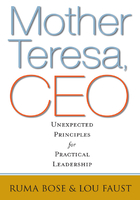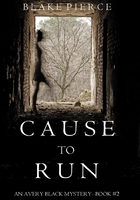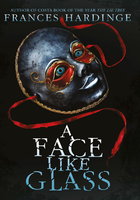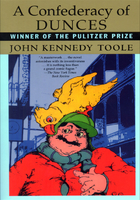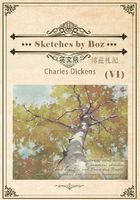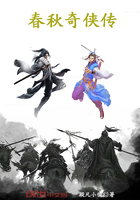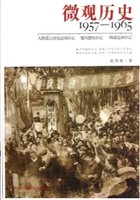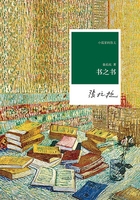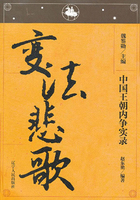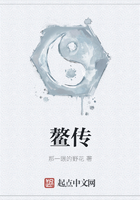FROM BASEBALL TO BROADWAY: Swatching in the Big Apple
KNITTING CONFERENCES used to have a reputation for taking place in Atlantic City or Oakland or maybe a ski resort in Michigan's Upper Peninsula during the off season. They were rarely in what you'd call "top-tier" destinations. The hotels usually had a free airport shuttle, dreadfully slow elevators, and lobbies that smelled like a swimming pool.
But when Vogue Knitting threw its hat into the event ring in 2011 with Vogue Knitting LIVE, it was a point of pride that its first show take place in the city most powerfully associated with the magazine and, in fact, with anything sporting the name Vogue: the Big Apple.
We gathered for three days in early January at the Hilton Midtown between West 53rd and West 54th Street, just up from Times Square, one long block from Fifth Avenue and within a Warhollian paint splatter of the Museum of Modern Art.
Every knitter of note had been invited, from Debbie Stoller (Yale-educated editor of BUST and author of Stitch 'n Bitch) and Meg Swansen (legendary daughter of the equally legendary early media maven Elizabeth Zimmermann) to Stephanie Pearl-McPhee (two-time New York Times bestselling author and possibly the only woman alive who can fill a convention center with sock knitters). They were there, along with nearly every author, designer, and teacher I'd ever known or admired—50 teachers in all, and more than 250 classes. It was a three-ring circus of the very best, most awe-inspiring kind.
Instead of gum-chewing staff who spell your name wrong and express awe at how far you've traveled ("Wow, Maine? Really?"), here we had doormen and corridors of elevators and glistening marble floors that looked like they'd just been cleaned with a Zamboni. In the midst of it all was the deeply incongruous but irrefutable presence of knitting. Skeins of yarn had been arranged along the top of the check-in counter. A tall, glitzy event banner hung proudly by the main doors that opened onto Sixth Avenue.
The event was a three-day embodiment of, "If you build it, they will come." More than 2,500 students and 6,000 market-goers converged for the inaugural show. Many traveled from afar, excited to have a reason to venture into New York City. Others emerged from nearby brownstones and co-ops and condos. Like superheroes responding to the Bat Signal of knitting, they came.
Some were regulars, the kind who can rattle off the names of every conference they've attended for the last twenty years. These are the knitting groupies who collect names and experiences.
"To tell you the truth," one might say, "I wasn't that pleased with the accommodations at Stitches East."
Her friend would interrupt, "But they had that buffet… ."
"Oh you're right," she'd reply, "that was good. But the parking, that was highway robbery."
They'd both nod and look around the room, arms folded, collecting more observations to discuss back in their hotel room.
For others, this was a first. I had an elegant, fur-clad woman in my yarn class. She wore diamond earrings the size of swimming pools, and she'd never heard the word "handspinner" before—nor did she understand what my explanation, "someone who spins yarn by hand," meant. Yet, she was a knitter, the deeply intuitive kind who was probably taught by her mother (or nanny) at such an early age that it was instinctive now. She knew the how, and I was able to teach her the why—why, for example, she wanted a silk blend for that fine, flowing pleated skirt she was about to begin.
These events are the closest we have to our own university, to tenured professors and a formal curriculum. Because we lack sufficient financial clout to establish a permanent place for such learning, we have this traveling circus of experts who roam from town to town, event to event, squeaky-wheeled suitcases of samples in tow. Instead of vacuum cleaners or encyclopedias, we sell knowledge and skill acquired from decades of experience.
Our classes covered everything from cables and Estonian lace to welts, reversible color knitting, and, in my case, yarn. Some taught entire classes dedicated to helping you complete one pattern; others focused on technique and theory.
At the heart of it all, we were pitching inspiration. We taught the dream that you can make these things at home. And through achieving that dream, and with the ensuing confidence that brings, you feel a few inches taller after conquering something you honestly didn't think you could do. Some run marathons to get this feeling, others knit. Some, like Susie Hewer, run marathons and knit and set Guinness World Records for it.
In our cozy bubble, it was easy to forget where we were or that anyone else was staying at the hotel. A brief elevator ride was all it took, a friendly smile, a glance at our name tag, a double-take, an exclamation of, "Knitting, huh?" followed by an awkward silence until they reached their floors.
Knitters, like nurses and librarians, seem doomed to stereotype. As Stephanie Pearl-McPhee first pointed out, there are more knitters in North America than golfers. We represent one of the largest consumer population segments. Yet we continue to be pigeonholed as weak and comically irrelevant. When it was announced that Hillary Clinton would become a grandmother, opponents suggested she drop out of politics to stay home and knit for the baby. Nothing is a stronger cultural lightning rod than two needles and a ball of yarn.
But by Saturday night in the Big Apple, we were feeling our oats. We'd bent the hotel to our will. We had the waitstaff and bartenders and housekeepers trained. Do not touch the shawl that's blocking on the bedspread. Bring extra water to all the classrooms, and make sure it has lots of ice in it. When I say "Tanqueray and tonic," I mean pronto.
As we sprawled and knit and drank and talked in the lobby that evening, I noticed a disturbance in our midst. Newcomers were arriving, fancy people in suits and winter coats and furs. They walked in clusters, exerting a confidence that suggested they, not we, were the ones who owned the place.
They were oblivious to our signage, to our yarn displays, to our sprawl, just as most of the knitters were oblivious to them. I watched as a man with a big camera took pictures of the people shaking hands.
I'd gone to the lobby to meet Stephanie for dinner. She was surrounded by fans near a group of the newcomers. I joined her and glanced over at the fancy people. A distinguished older gentleman met my eye. I smiled and he gave me a wink.
I learned later that I'd just exchanged a smile with Willie Mays, the highest-ranking living player in baseball history. He was in town for the New York chapter of the Baseball Writers' Association of America's annual awards gala, which was taking place somewhere in the bowels of our hotel. Sports Illustrated would describe that evening's event as, with the exception of the All-Star Game, "the greatest assemblage of baseball stars in one place." And it was happening during the greatest assemblage of knitting stars in one place.
I wonder what a Knitting Writers' Association of America would look like. Where would we hold our banquets? And who would we invite? We have no shortage of designers, people with great skill in translating creative vision into numbers on paper. But we have far fewer capital-W Writers in the knitting world.
Stephanie would naturally be on the board, as would Debbie Stoller. June Hemmons Hiatt would get lifetime membership for her work on The Principles of Knitting. Of course, posthumous nods would be made to Richard Rutt for his A History of Handknitting and Elizabeth Zimmermann for, well, everything she did. Novelists Ann Hood and Debbie Macomber, they, too, would be card-carrying members. Maybe I'd try to pull strings and get historian Laurel Thatcher Ulrich an honorary membership for her inspiring work, The Age of Homespun.
That's still only six living people, not including myself. Forget the Hilton, we could just take a table at a diner for our meetings. Maybe a diner like the one I went to for lunch the next afternoon.
I'd been teaching for so long that my brain was starting to get fuzzy, usually a sign that I should get out and take a walk. I headed away from the hotel as fast as my feet would carry me, down to West 47th Street to the nearest greasy old-school diner I could find. A TV on the wall was blaring the Fox News Channel, and a man a few stools down from me at the counter made a grunt of disapproval. I turned and smiled.
"Of course they're playing that garbage," he muttered, "their offices are on the other side of that wall." I noticed all the framed, signed head-shots on the wall—all of Fox News celebrities.
We started talking and he asked where I was from. When I said Maine, he launched into an inventory of all the cruises he'd taken up the coast with his wife. "We've taken, let's see now, seventeen cruises," he said. "We've done New England, the Caribbean, the Panama Canal, Europe …" He was counting on his fingers now. When I confessed I'd never taken one, he started advising me on which cruise lines were better, had better crews, better ships, less likelihood of running aground or giving you dysentery.
My only clue that this wasn't just an old guy who loved cruises and wanted his corned-beef hash extra crunchy was the fact that the waitstaff all referred to him by his last name, reverently adding "Mister" before they said it.
"There's my sound guy!" He suddenly greeted someone over my shoulder. "Come on over here, buddy," he added, motioning a young, friendly-looking man over to the empty seat between us. Introductions were made. They worked on a Broadway show that had just opened at a nearby theater. This was their quiet lunchtime hangout, safely hidden from the cheesecake-seeking tourists of Times Square.
Just then, another man came in, dapper and extremely handsome, with a spring in his step and that kind of inexplicable charisma that makes you want to stare. They introduced him as the star of the show, a dancer who'd also made a name for himself on a very popular television show I didn't watch. I'd never heard his name before.
"So, what brings you to New York?" asked the star.
I wanted to say I was rehearsing at Carnegie Hall, or giving a reading somewhere, perhaps recording a new album. I knew that the moment I told the truth, that I was there for a knitting conference of all things, their faces would fall. We'd have a repeat of the elevator scenes, the telltale awkward silence before they could find a way to beat a retreat.
But then something unexpected happened. As soon as I told them the truth, the sound man broke into a smile, swiveled on his stool, and lifted up his pant leg to reveal the cuff of a perfectly executed, clearly handknitted sock.
"I told my mom, I don't want any other gifts from now on. Just socks!"

